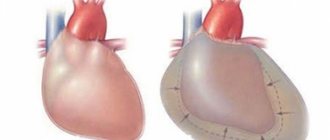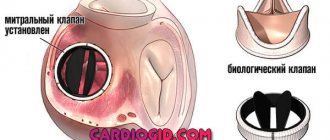Tinnitus, or scientifically tinnitus, is not a real sound, but an illusion of sound that occurs in the nerve circuits of the brain. It can be heard as squeaking, ringing, hissing, buzzing, clicking, etc. The volume of tinnitus can range from barely noticeable to severe, interfering with a person's ability to carry out their normal activities.
About 15% of the world's population suffers from tinnitus. If a squeak or hiss appears and disappears within a few minutes or hours, this is not a cause for concern. But if tinnitus becomes constant, interferes with work during the day, and prevents you from sleeping at night, then it’s time to make an appointment with a specialist. This may be a symptom of developing hearing or nervous system problems.
Causes of tinnitus
- The main cause of persistent tinnitus is hearing impairment. 80% of patients who turn to a neurologist or ENT specialist with a noise complaint already have varying degrees of hearing impairment.
- A concussion can damage the inner ear, causing tinnitus.
- Sulfur plug. When a large amount of wax accumulates in the ear, hearing deterioration occurs, but this problem can be solved in a few minutes in the ENT doctor’s office.
- Problems with the heart and blood vessels can cause pulsating tinnitus, which is often accompanied by dizziness and weakness.
- Tinnitus is a side effect of certain medications - for example, NSAIDs, diuretics, aminoglycoside antibiotics. If tinnitus occurs in response to medication, discuss this with your doctor.
- Age-related hearing loss can also cause tinnitus. The main risk group is people who have been exposed to strong noise throughout their lives - working in noisy industries, in the subway, at concerts and clubs, working with aircraft engines, etc.
- Young people who often attend concerts and listen to music at high volumes are also at risk.
- Chronic and severe diseases - brain tumors, damage to cranial nerves, diabetes, hepatitis, hypothyroidism, hereditary anomalies.
What diseases does the body signal with noise in the ears and head:
- osteochondrosis;
- scoliosis;
- dorsopathy;
- disc herniation;
- disc protrusion;
- glenohumeral periarthritis;
- listhesis;
- spondylosis;
- spondyloarthrosis;
- radiculopathy;
- myositis;
- muscular-tonic syndrome;
- vegetative-vascular dystonia;
- progressive hypertension.
- Discomfort in the head and ears also occurs as a consequence of a compression fracture of the spine, due to post-traumatic deformities of the spine, and birth injuries.
Symptoms of Tinnitus
The main symptom of tinnitus is tinnitus of any type - whistling, ringing, rustling, buzzing, clicking, crackling, squeaking.
If the noise is accompanied by a sharp headache or severe dizziness, call an ambulance immediately. This may be a symptom of a cerebrovascular accident or hemorrhage.
If the noise is accompanied by pain in the ear, purulent discharge, or partial hearing loss, consult an ENT doctor. Most often these are symptoms of ear infections.
Symptoms of autonomic dysfunction (almost all occurring sharply and acutely):
- changes in heart rhythm (tachycardia or bradycardia);
- feeling of lack of air, shortness of breath;
- pallor of the skin or, on the contrary, redness as a result of a rush of blood;
- increase or decrease in blood pressure;
- heartache;
- feeling of fear, anxiety;
- headache;
- dizziness, weakness, near fainting, tingling and goose bumps, noise in the head;
- chills;
- sweating;
- sore throat.
One of the most common options is a panic attack. This is a sudden onset anxiety disorder, initiated by a sharp release of the stress hormone - adrenaline. The pulse and breathing quicken, despite this the person feels short of air, experiences increasing anxiety, dizziness, weakness in the legs. Symptoms appear in attacks, with the attack passing in 10-40 minutes, leaving behind a feeling of weakness and a feeling of fear of a new attack. Over time, the situation only gets worse - the person becomes a slave to his fear of a new attack. A particular danger of VSD is an increased tendency to commit suicide. However, it is possible to help people suffering from autonomic dysfunction. The initial stages of VSD are treated with several visits to a psychotherapist. More advanced cases require complex treatment from a neurologist, but they are also not hopeless. Breaking the vicious circle of fear and pain is the main goal of treatment.
Treatment
Treatment is prescribed by an otolaryngologist and a neurologist. In some cases, the help of a cardiologist and endocrinologist is required. Prescriptions depend entirely on what disease was identified during diagnosis.
What treatment may include:
- Drugs for the treatment of the underlying disease - antibiotics, antipsychotics, hormonal drugs;
- B vitamins;
- Physiotherapy and mechanotherapy;
- Psychotherapy in combination with meditation and breathing exercises;
- Noise maskers - for example, recording the noise of a forest or sea;
- If necessary, surgical intervention - removal of the tumor, impact on the sympathetic nerve nodes, surgery to improve hearing.
In the medical department you can get advice from doctors: a neurologist, an otolaryngologist, a psychotherapist and a surgeon. Make an appointment right now so as not to waste time and get qualified medical care.
With us you can get tested and undergo the necessary procedures during the treatment of tinnitus and related diseases.
Why is there noise in my head?
According to statistics, each of us may experience noise in the head or ears during our lives. It happens that the noise goes away on its own, but sometimes it persists for a long time and is a sign of some disease.
Types of noise
As you know, the human body “makes noise” - the heart works, blood vessels pulsate, muscles contract, joints move. However, normally we do not perceive these sounds. An audible, intrusive and unpleasant noise in the ears and head is considered a deviation from the norm.
A person can hear ringing, rhythmic knocking, pulsation, it may be similar to the noise of leaves or surf, or whistling. The symptom can be constant or periodic, unilateral or bilateral.
An exception is the “perception of silence” in a healthy person - this is a specific constant noise that we can hear when we are in complete silence.
In medical practice, it is customary to distinguish two main pathological types of noise - subjective and objective.
Subjective noise
only the patient himself hears. The reasons may be:
- damage to the hearing organ (for example, sensorineural hearing loss, cerumen plug, otitis media, otosclerosis);
- various metabolic disorders (atherosclerosis, diabetes mellitus, thyroid disorders, etc.);
- tumors of the cerebellopontine angle and temporal bone;
- exposure to medications (eg, salicylates, antihypertensive drugs);
- spinal instability;
- multiple sclerosis;
- mental illness (we are talking about auditory hallucinations).
Objective noise
heard not only by the patient, but also by the doctor during examination with a phonendoscope, and sometimes even by the people around him. The most dangerous cause is vascular lesions - tumors from blood vessels, structural anomalies and damage to large arteries and veins. A murmur may also occur with intracranial hypertension.
Consequences of lack of treatment
Ignoring a symptom such as tinnitus can ultimately lead to partial or complete hearing loss. If the cause of tinnitus is a tumor, then the worst result of lack of treatment can be death. Tinnitus is most often a symptom whose causes should be investigated by a doctor.
Don't delay visiting a specialist. Pay attention to symptoms and get diagnosed promptly. After 40 years, doctors recommend checking the condition of the hearing organs annually in order not to miss the onset of age-related changes and to prevent hearing loss.
Be healthy!
Vascular problems
Most often they arise due to compression in the cervical spine - let’s say “thank you” to the lack of mobility, long hours of working at the computer, relaxing with a smartphone in hand. But there may be other reasons: cerebrovascular accidents, rapid pulse, high or low blood pressure. And this, in turn, is also a symptom. It’s just that there are no big deviations from the standard 120/80 and 110/70.
Treatment then will consist of removing blocks and clamps in the neck from a neurologist, orthopedist, chiropractor, normalizing blood pressure, etc.
By the way, one of the signs (not mandatory, do not engage in self-diagnosis, doctors warn, just take note and pay attention to the specialist at the appointment) that noise, humming and whistling in the ears are associated with blood vessels, if they have a pulsating nature, which coincides with the heart rate abbreviations.
But there can also be very dangerous conditions! For example, tinnitus is one of the first, early signs of a stroke. If you have time to consult a doctor, the destructive effect on the body can be prevented or smoothed out.
Kinds
The work of the body is accompanied by the appearance of somatic or vibrator sounds. They appear during breathing, heartbeat, muscle contraction, and blood circulation. Somatic sounds become perceptible under certain conditions:
- heightened perception;
- noticeable increase in vibrations;
- the appearance of nonspecific noises.
In otolaryngology, the following groups of sounds are distinguished:
- vascular;
- noises of the external and middle ear;
- muscular;
- peripheral;
- centrally sensory.
Noises have a number of characteristics. They can be unilateral and bilateral, constant and periodic, monotonous and pulsating, high-frequency and low-frequency, intense and mild.
The severity of discomfort varies. According to the classification of A.P. Velitsky, there are 3 degrees of noise:
- weak;
- average;
- strong.
At the initial stage, the patient may not notice the discomfort, but only pays attention to it during the examination. That is, this is not the main symptom that led to seeking help.
The average degree of severity manifests itself in complaints of noise, but the patient does not pay attention to it. In severe cases, noise in the head and ears is the main symptom. A person feels constant discomfort, which worsens the quality of life.
In clinical practice, there are several classifications. According to E.R. Fowler, there are 2 types of tinnitus:
- vibrator (objective, related to the work of organs and systems);
- non-vibratory (subjective, resulting from irritation of the auditory nerve).
Objective noise occurs as a result of vascular and muscular pathology.
Vascular murmurs are characterized by a number of signs:
- permanence;
- synchronization with the pulse;
- changes in intensity depending on the degree of compression of blood vessels and the position of the head.
Increased discomfort is associated with increased blood pressure.
Muscle noise is not constant. The sounds that a person hears are similar to the chirping of a grasshopper. Some describe them as clicking.
Subjective noise is perceived as more painful. The sounds that the patient hears do not carry any information. The brain tries to decipher them, but to no avail. As a result, a person feels fear and anxiety.
Diagnostics
An otolaryngologist looks for the causes of tinnitus. The examination includes instrumental examination and laboratory tests. The most complete information is provided by:
- otoscopy – examination of the ear canal using an otoscope allows you to detect inflammation of the outer and middle ear and damage to the eardrum, as well as assess its mobility;
- audiometry – a set of techniques for assessing the quality of hearing;
- X-ray – a picture of the bones of the skull and spine allows you to identify the neurological causes of tinnitus. If the picture is not clear enough, then CT and MRI of the head are prescribed;
- hagiography with contrast agent – visualization of blood vessels and their patency. The method allows you to accurately determine the location of the pathological focus.
Laboratory tests are used as additional methods to clarify the presence or absence of inflammatory processes. To determine the pathogen, a bacteriological culture of the flora is taken. Complex cases require additional consultations and examinations. For example, a psychiatric examination may be ordered.
What to do and how to deal with this unpleasant symptom?
Noise or ringing in the ears with VSD is a reason to consult a doctor to rule out the possibility of organic pathology. The presence of additional symptoms and progression of disorders most often indicate the formation of diseases of the ear or nervous system.
Treatment tactics for this symptom in VSD include:
drug (pharmacological) therapy with antidepressants or tranquilizers: Clonazepam, Amitriptyline;- cognitive and behavioral correction aimed at distracting the patient from subjective noise and setting him up for positive thinking, concentration and relaxation;
- sound therapy uses the sounds of the natural environment (the sound of water, wind, rain) to reduce the sensitivity of neurosensory cells to somatic vibrations;
- music therapy is a desensitization method (reducing sensitivity) that masks tinnitus and other unpleasant sensations;
- massage and stretching of the masticatory muscles is a special exercise that relieves not only tinnitus, but also headaches and dizziness.
The greatest effect is achieved by a combination of methods against the background of changing the patient’s lifestyle and avoiding trigger factors.
Causes
Progressive tinnitus causes a number of diseases, the main ones being Meniere's disease, sensorineural hearing loss, and cochleovestibulopathy. Also, tinnitus can occur due to injuries, and due to sudden changes in atmospheric pressure, low blood pressure, cerumen, tension in the temporal muscles during stress, and problems with dentures.
Sensorineural hearing loss
This disease is caused by pathological damage to the sensory nerve cells of the cochlea, the auditory nerve, or the association fields of the cerebral cortex. The main symptoms are hearing loss, which progresses over time, dizziness, high-frequency tinnitus, unsteadiness of gait, nausea and vomiting. Sensorineural hearing loss can be acute or chronic. In the first case, the disease develops with increasing intensity, often unilateral hearing loss accompanied by headache. In this condition, emergency care is required, hospital stay, and sometimes surgical intervention is necessary. After this, the patient should undergo outpatient treatment, just like patients with a chronic form of the disease in whom hearing loss occurs gradually in both ears and slowly progresses.
Meniere's disease
This is the most severe disease of the inner ear, which is characterized by dizziness, hearing loss, nausea, vomiting, decreased blood pressure, unsteady gait, and sweating. All these symptoms occur in attacks lasting from several hours to several days. They can be treated in a hospital setting with drug therapy. In the absence of a positive effect, operations are recommended - on the formations of the tympanic cavity, destructive operations on the vestibulocochlear nerve and labyrinth, decompressive operations on the labyrinth.
Cochleveostibulopathy due to vertebrobasilar insufficiency
The main symptoms of VBN are hearing loss, tinnitus of varying intensity and frequency, dizziness, headaches, memory loss, sleep disturbance.
Causes of symptoms in patients with vegetative-vascular dystonia
Vegetative-vascular dystonia is a pathology that is characterized by a violation of the innervation of the tone of arteries and veins in response to changes in the parameters of the internal or external environment.
The onset of VSD is most often observed in adolescents during the phase of active growth and hormonal imbalance. The additional influence of high concentrations of estrogen or testosterone disrupts the lability of the tone of the smooth muscle structures of the arteries.
Tinnitus with VSD is vascular in nature - increased blood flow in the internal carotid artery, which passes through the tympanic cavity, causes the appearance of symptoms.
Characteristics of ringing or stuffy ears with VSD:
- one- or two-sided;
- not constant intensity;
- rhythmic pulsation in time with the contraction of the heart;
- "hissing character"
Experts associate the frequency of complaints with the tendency of patients in this category to “self-listen” to the somatic sounds of their own body. Lability of vascular tone is often accompanied by an increase in blood pressure, which causes a feeling of heaviness or pain in the back of the head.
Constant exposure to stress factors (emotional), overheating or hypothermia contribute to the development of frequent episodes of exacerbation of symptoms.










